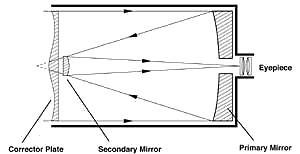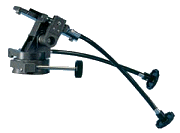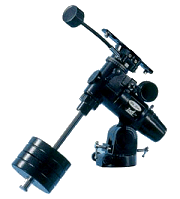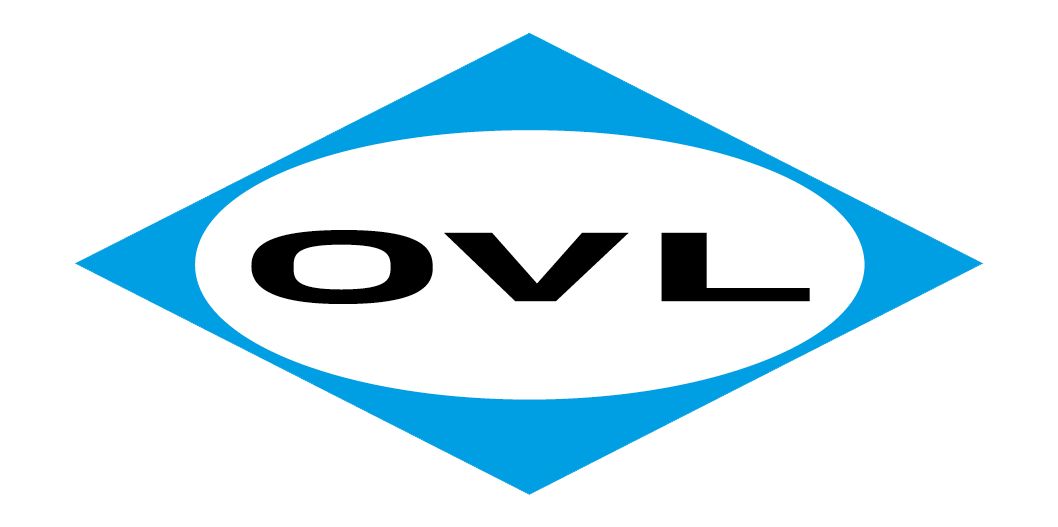Types of Telescope
This most common type of reflector telescope uses a concave objective mirror (primary mirror) at the back of the tube and a secondary mirror, which directs the light to the eyepiece. Since the light rays entering the telescope reflect off the mirrors and don't pass through the glass, no false colour is produced. Orientation of the image is not important for astronomy so the image is left uncorrected. The Newtonian reflector represents excellent value for money as typically they offer more aperture for a given price than other types of telescope.
Refracting telescopes have an objective lens at the front of the tube. The light exits out through the back of the tube to the eyepiece. Since many observations are made high in the sky, a right-angle diagonal is used to avoid neck strain. This also provides an upright image making them suitable for terrestrial observations. A refractor has several advantages over other designs. The tubes are enclosed so that dust and moisture do not enter the tube, they have fixed optics that do not normally require collimation, and they do not have a central obstruction which reduces the light entering the tube. A refractor typically will give higher quality images of planets than other telescopes of similar aperture.
Telescope Mountings A mounting with a tripod is necessary to point a telescope at its target, and to hold it there securely. A larger, sturdier mount is necessary for heavier telescopes. There are two basic types of mountings, and each is suitable for different applications.
The Alt-azimuth mounting is a simple system which moves in two directions; sideways, and up and down, and is sometimes provided with slow motion cable controls to accurately point the telescope. This type of mounting is ideal for terrestrial observations and can also be of use for basic astronomical observations.
There are several different models of equatorial mount offered in this website, and the principle of all of them is the same. The principle is to correct for the rotation of the Earth with one motion during astronomical observations. the Earth's rotation causes objects to rise in the East, follow a circular path across the sky and set in the West. When using an astronomical telescope at high power, it will be only take approximately 30 seconds for the object to move out of the field of view. The equatorial mounting allows the telescope to track the objects and to keep the image in the centre of the eyepiece. When the equatorial mount is correctly aligned, tracking can be achieved either by turning a gear manually or with a motor drive which tracks objects automatically.
|
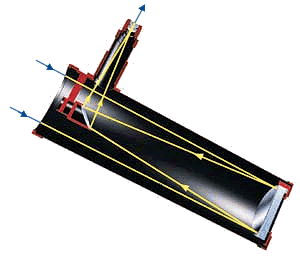 The Newtonian Reflector
The Newtonian Reflector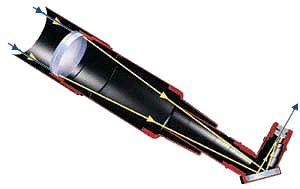 The Refractor
The Refractor


